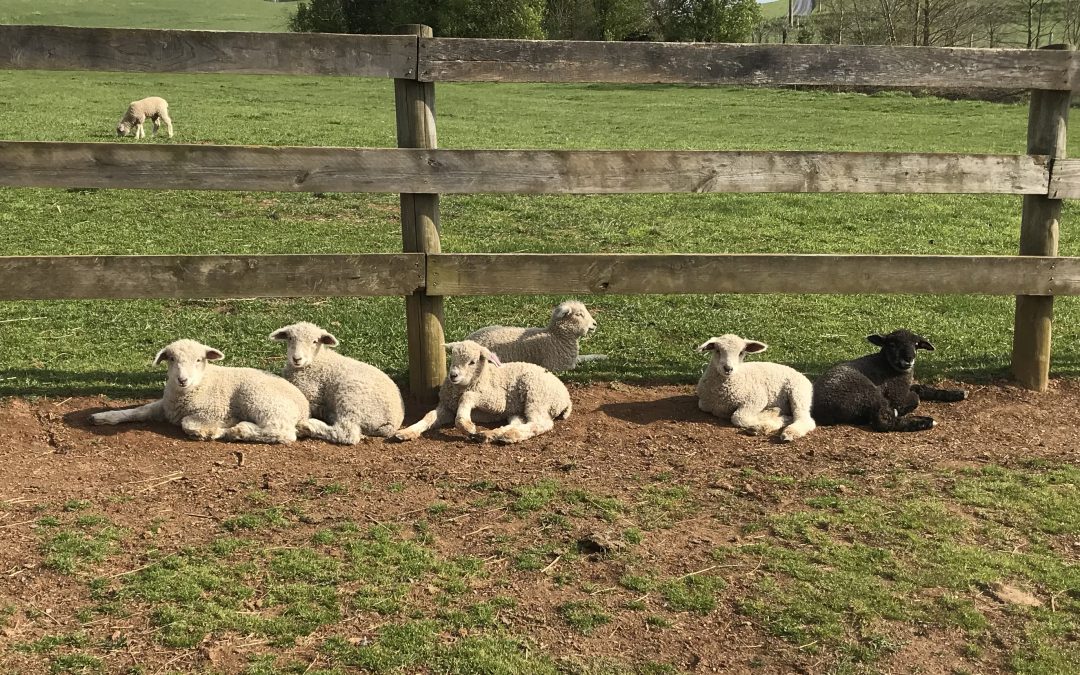Lambing time has come – and gone!
We have 18 lambs, all healthy and bouncing. We ended up with one set of triplets, and one single lamb (who was huge at 14 pounds!). Everyone else had twins. The only one we seriously had to help was the last one with the huge lamb. We do have one bottle baby – the smallest of the triplets. Her Mom didn’t really reject her but she was having a hard time pushing her way in to nurse with two bigger siblings. So ‘Minnie’ does get bottle fed – but is also very adept at grabbing milk from other ewes. Our grand total was 9 boys and 9 girls, and 9 each colored and white. We have set up the creep feeder for the lambs so they can begin eating grain. This is an enclosed area with adjustable openings so the lambs can get access but the bigger sheep can’t. The lambs will get their first round of vaccinations at about 30 days old (early May). They are then given boosters 30 days later. (sound familiar?).
We will also be shearing the rest of the sheep in May so will have fleeces available for anyone interested. We did just get in our latest batch of yarn spun by Blue Mountain Farms in Pa. This includes some almost jet black, natural colored from Mikayla that is absolutely stunning. We also have more greys and natural white. Contact Carolann if interested.
In addition to growing lambs May is the start of hay season. Normally we do our first cutting around Memorial Day but given the rain and warm weather thus far we may be able to cut earlier. Hay making is really a 4- step process. First the hay is cut. Then it is tedded or basically stirred about to help it dry. It then is raked into windrows so the baler can pick it up and bale it into either small square bales or bigger round bales. Watching the baling is a real treat. Who would think a machine could scoop up the hay, compact it, wrap it in string, tie the string, and (if small square bales), throw it into a wagon – without computers!
The hop yard really starts to come to life in May. The sheep were moved out the end of April so the hops shoots can start to grow without being nibbled off. The rows have been crowned to help control mildews and the trellis will be tightened. Stringing is then also done by hand in May. This entails running coir twine from the ground where it is held in place with ‘hop clips’ over the trellis wires and back down. The coir twine is made from coconut fiber which provides a rough surface for the hops to grip and is also strong enough to withstand the hop picker.

